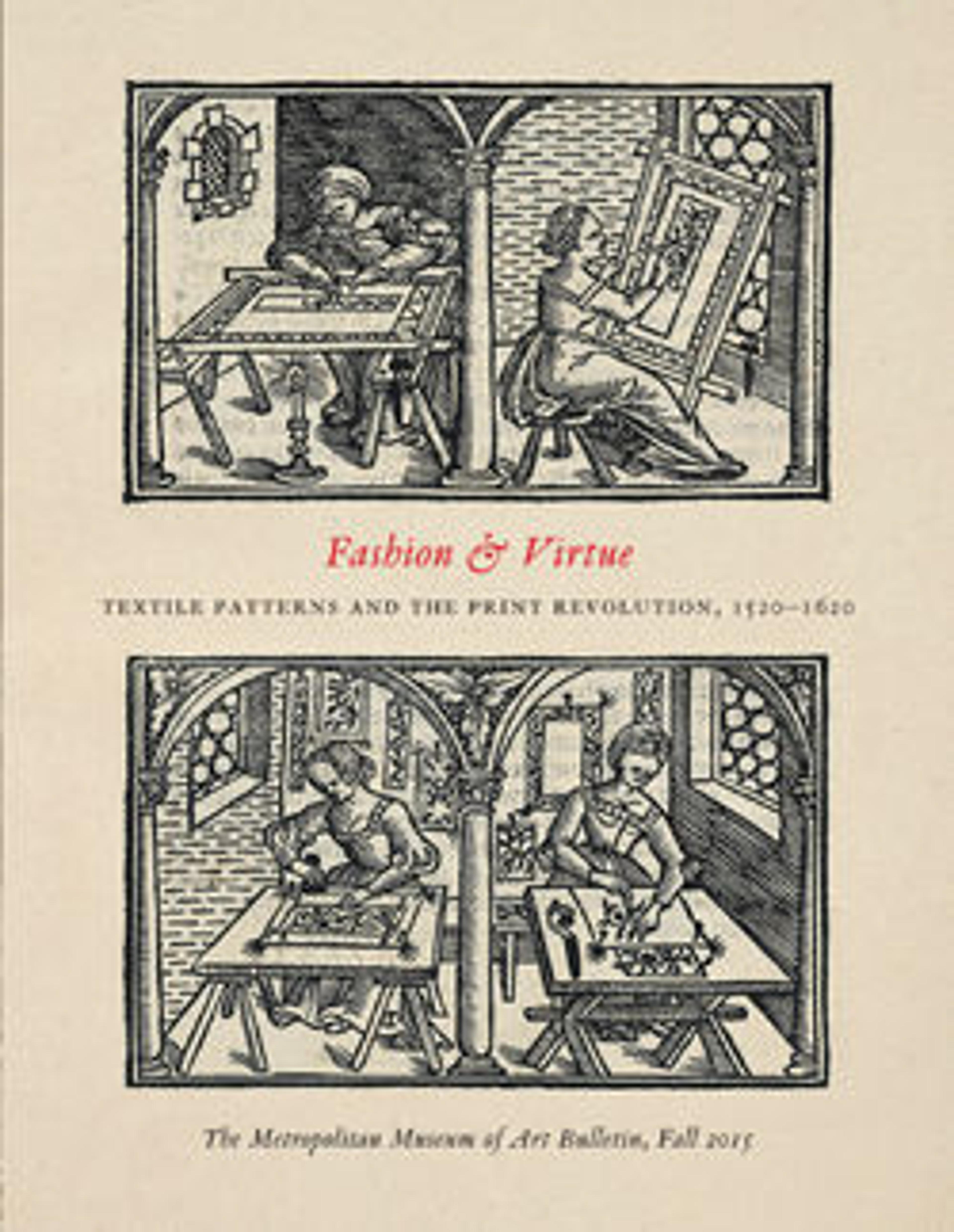Work bag
A fine example of English amateur embroidery of the late 1600s, this work bag bears the initials of the young needleworker who made it, who also added the date 1669, and her age, ten. The bag, which would have been used to store embroidery implements and supplies, is decorated on both front and back with red wool thread, primarily in a double running stitch, on a linen foundation.
Embroidery was an essential component of female education in England in the seventeenth century; students generally completed at least one sampler displaying a variety of techniques and designs. By the mid-seventeenth century the repeating border designs worked on samplers had become anachronistic in the contemporary design vocabulary, having been derived from sixteenth-century pattern books produced on the Continent and adapted by English publishers. To find an old-fashioned border design on a practical object like this work bag is unusual. Yet the detached motifs in the carefully organized yet lively design - human figures; native plants and flowers, including strawberries, acorns and honeysuckle; heraldic animals such as lions, leopards, and stags; and more prosaic creatures such as birds and caterpillars - are typical of those found on English embroidered textiles throughout this era.
Embroidery was an essential component of female education in England in the seventeenth century; students generally completed at least one sampler displaying a variety of techniques and designs. By the mid-seventeenth century the repeating border designs worked on samplers had become anachronistic in the contemporary design vocabulary, having been derived from sixteenth-century pattern books produced on the Continent and adapted by English publishers. To find an old-fashioned border design on a practical object like this work bag is unusual. Yet the detached motifs in the carefully organized yet lively design - human figures; native plants and flowers, including strawberries, acorns and honeysuckle; heraldic animals such as lions, leopards, and stags; and more prosaic creatures such as birds and caterpillars - are typical of those found on English embroidered textiles throughout this era.
Artwork Details
- Title: Work bag
- Date: 1669
- Culture: British
- Medium: Linen worked with wool thread; double running and herringbone stitches
- Dimensions: Overall, excluding tasseled cords: 18 1/2 x 24 in. (47 x 61 cm)
- Classification: Textiles-Embroidered
- Credit Line: Purchase, Friends of European Sculpture and Decorative Arts Gifts and Rogers Fund, 2006
- Object Number: 2006.263
- Curatorial Department: European Sculpture and Decorative Arts
More Artwork
Research Resources
The Met provides unparalleled resources for research and welcomes an international community of students and scholars. The Met's Open Access API is where creators and researchers can connect to the The Met collection. Open Access data and public domain images are available for unrestricted commercial and noncommercial use without permission or fee.
To request images under copyright and other restrictions, please use this Image Request form.
Feedback
We continue to research and examine historical and cultural context for objects in The Met collection. If you have comments or questions about this object record, please contact us using the form below. The Museum looks forward to receiving your comments.
